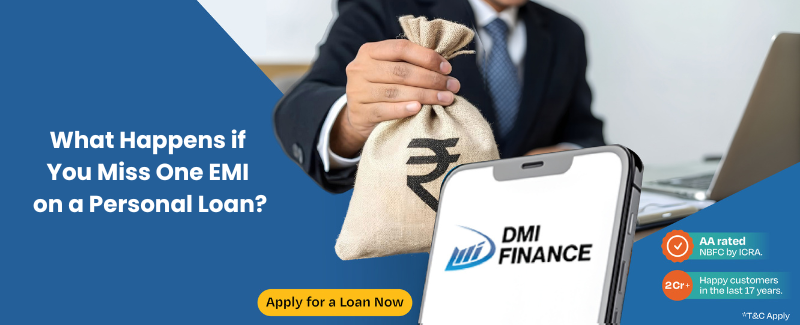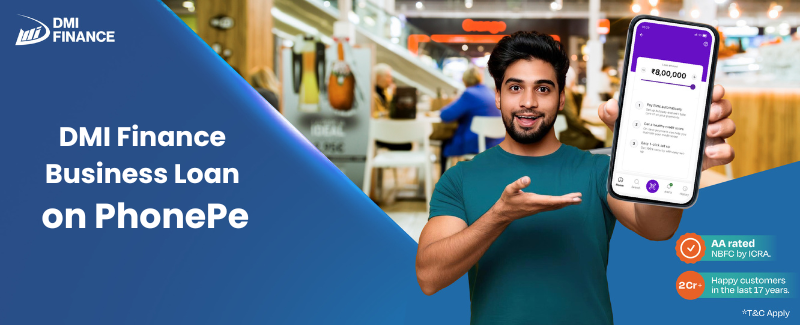- Published on: 20 Oct 2025
- Last updated on: 20 Oct 2025
- Post Views: 302


Education is one of the biggest and best investments you can make in your future. However, you need to pay for the tuition fees, hostel fees, living and accommodation charges, and other expenses. For most students and parents, the greatest concern is: how to finance them all?
There are two options that can help you fund your education: Personal Loans and Student Loans. Both will help you in paying for your education; however, they both serve different purposes and have their own advantages and disadvantages. In this blog, we will explore the differences between these loans and help you determine which one is best suited for your education.

A Student Loan is a special type of loan used to finance study expenses. Student Loans usually pay for tuition fees, books, hostel charges, and sometimes even transportation and maintenance costs. Generally, you can take a Student Loan before you begin your studies, depending on your admission letter.
Student Loans offer affordable interest rates and flexible repayment options. It allows you to start repaying either after completing your course or once you begin earning.
A Personal Loan for education is a general Personal Loan that you can use to finance studies. Personal Loans differ from Student Loans as they are not limited to studies only. That implies you can use the funds for any study-related expenditure, like tuition fees, exam fees, accommodation, gadgets, travel, or whatever you want.
Personal Loans are unsecured loans, and you don’t have to give any security or collateral. You do not even need to provide an admission letter to get this loan. The approval process is normally faster than for Student Loans.
A Personal Loan for study can prove to be a good alternative if you need immediate access to money. Or if your course or college doesn’t qualify for a Student Loan.

While comparing Student Loans and Personal Loans, there are several differences you need to understand. Let us discuss each of the differences in detail.
| Factor | Student Loan | Personal Loan for Education |
| 1. Eligibility | • Offered to students admitted to recognised colleges or universities • Co-applicant (parent/guardian) with a stable income is often required | • Based on the applicant’s income and credit score • Students without income need a co-applicant or guarantor, such as their parents. |
| 2. Interest Rates | • Generally lower interest rates • Supported by government schemes and considered a priority by lenders (banks & NBFCs) | • Higher interest rates • Not backed by collateral or government support |
| 3. Repayment Terms | • Includes a moratorium period (grace period) until course completion or employment • No repayment required during studies | • No moratorium period • EMI repayment starts immediately after loan disbursement |
| 4. Loan Amount | • Can cover full educational expenses, like tuition, travel, books, and accommodation • The amount depends on the lender, course, and institution | • Fixed upper limit on loan amount • May not cover all costs, especially for studying abroad |
| 5. Collateral Requirements | • Usually secured for higher amounts • May require property, FD, or insurance as collateral • Smaller loans may be unsecured | • Completely unsecured • No collateral or security needed |
Here are some of the key advantages:
Student Loans are a great borrowing option; however, they also have some disadvantages:

Here are some of the key benefits:
Though Personal Loans are easy to avail, there are some disadvantages:
Here’s the process to apply for a DMI Finance personal loan:
Your application will be submitted for review, and you’ll be notified of approval within a few minutes.

Pursuing higher education is one of the most important milestones in a student’s life. However, not every student has the funds to comfortably finance their education. Student Loans and Personal Loans for education are two of the best ways to cover these expenses, each with its own advantages and disadvantages.
A Student Loan is structured, cost-effective, and designed with students in mind. However, it often takes longer to get approved and may involve paperwork and collateral. On the other hand, a Personal Loan offers convenience, ease, and flexibility, though typically at a higher cost.
DMI Finance offers flexible personal loans to help you pay for your education. Enjoy fast approval and convenient repayment options tailored to your needs. Apply today and easily pay for your future!
1. Can I use a Personal Loan to study abroad if I don’t qualify for a Student Loan?
Yes, you can use a Personal Loan for education to fund studies abroad if your course or university isn’t eligible for a Student Loan.
2. Do lenders check my credit score for a Student Loan?
For Student Loans, lenders usually check the co-applicant’s credit score rather than the student’s, as students often don’t have a credit history.
3. Can I prepay or foreclose my Student Loan before the tenure ends?
Yes, most lenders allow prepayment or foreclosure; however, they may charge a small fee for doing so.
4. Do I need a co-applicant for a Personal Loan for education?
If you’re not earning, you’ll likely need a co-applicant or guarantor with a steady income to get approval.
5. What happens if I fail to get a job after completing my course?
Lenders may offer an extended grace period or restructure your repayment; however, interest will continue to accumulate.
6. Can I switch my Student Loan to a Personal Loan later?
Not directly, however, you can refinance or consolidate your Student Loan with a Personal Loan if it offers better terms.
7. Are Student Loans only available for full-time courses?
Most are for full-time courses; however, some lenders may offer loans for part-time or professional certification programs.
8. Can I apply for both a Student Loan and a Personal Loan at the same time?
Yes, you can. For instance, if your Student Loan doesn’t cover all your expenses, you may need extra funds.
9. Which loan is better for studying abroad: a Student Loan or a Personal Loan?
A Student Loan can pay for tuition and other necessities at reduced rates, while a Personal Loan can pay for travel or other extra costs.
10. Does a Personal Loan for education affect my future credit score?
Yes, like any other loan, timely repayment improves your score, while delays or defaults can reduce it.
| Personal Loan of Different Amounts | ||
| ₹50,000 Personal Loan | ₹1 lakh Personal Loan | ₹2 lakh Personal Loan |
| ₹3 lakh Personal Loan | ₹4 lakh Personal Loan | ₹5 lakh Personal Loan |


